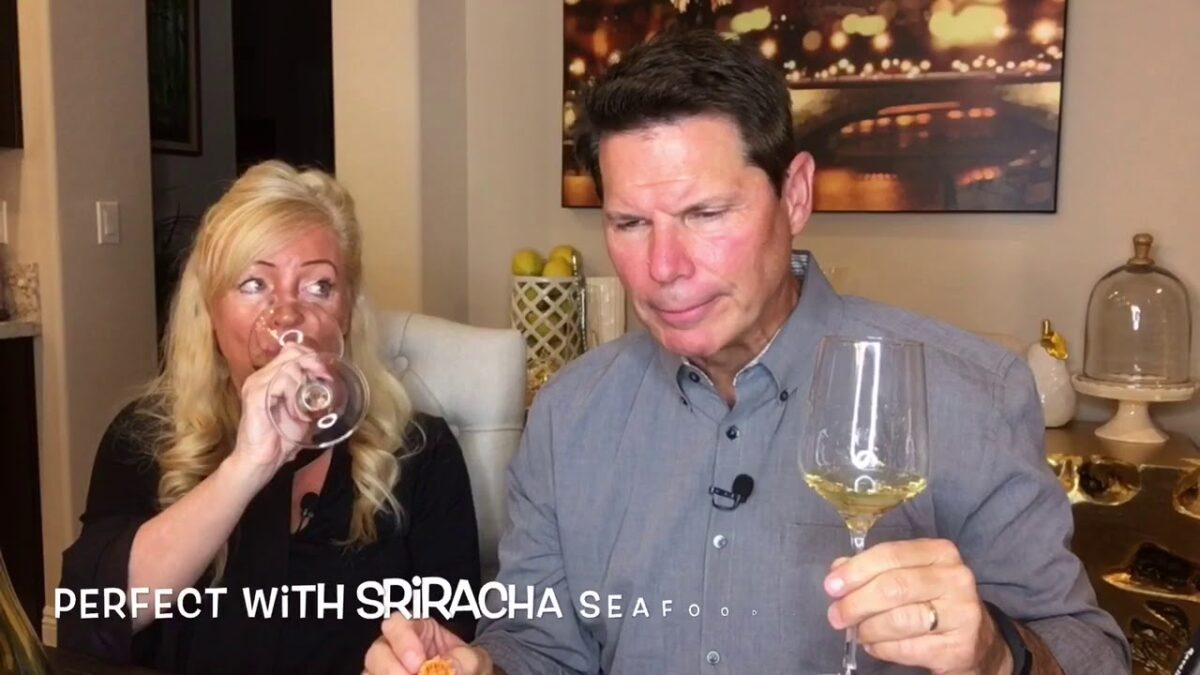Ignite your tastebuds: Best spicy alcoholic drinks to try
If you’re a fan of drinks that pack a punch, then you’re in luck. It’s time to ignite your taste buds with some of the best spicy alcoholic drinks available now. Spicy drinks have been gaining popularity in recent years for their unique flavor profiles and ability to add a kick to any cocktail. Whether you’re looking for a classic margarita with a spicy twist or something new and inventive, there are plenty of options. From jalapeño-infused tequila to spicy bloody marys, this list has it all. So, take a seat, grab a glass, and prepare to spice up your cocktail game with these top picks for the best spicy alcoholic drinks to try now.
Introduction to spicy alcoholic drinks
Spicy alcoholic drinks are a perfect blend of heat and flavor and the perfect drink for those who love a little kick in their cocktails. These drinks have become increasingly popular in recent years as the demand for spicy food and drink options has grown. With a variety of unique and complex flavors, spicy drinks offer a new dimension to traditional cocktails and can be enjoyed in a variety of ways.
Some of the popular spicy alcoholic drinks include the famous Bloody Mary, which uses hot sauce to create a spicy, savory cocktail, and the Mexican Michelada, which is made with beer, lime, and hot sauce. These drinks are enjoyed all over the world and are perfect for adding a touch of spice to your evening.
Whether you prefer sweet or sour drinks, adding a little spice can elevate the drinking experience and tantalize your taste buds. So, if you’re a spice lover looking for a new drink, look no further than the world of spicy alcoholic drinks.
Appeal of spicy cocktails
Spicy cocktails are becoming increasingly popular among cocktail enthusiasts and for good reason. Combining a spicy kick and the smoothness of alcohol creates a unique flavor experience. The heat from the spices can also complement the cocktail’s sweetness, resulting in a well-balanced drink.
Moreover, spicy cocktails are versatile and can be made with various spirits, such as vodka, tequila, whiskey, and rum. This versatility allows for a wide range of flavors and taste experiences, making it easier for people to find their perfect spicy cocktail.
Another appeal of spicy cocktails is that they’re not commonly found at every bar, and this exclusivity makes them a sought-after drink that adds a touch of adventure and novelty to your night out. Bartenders always experiment with new ingredients and techniques to create unique spicy cocktail recipes that leave a lasting impression on their customers.
Overall, the appeal of spicy cocktails lies in their ability to create a unique blend of flavors not commonly found in regular cocktails. They’re perfect for those looking to try something different and add a little excitement to their night out.
Understanding the Scoville scale
Before we dive into the world of spicy alcoholic drinks, it’s important to understand the Scoville scale. The Scoville scale measures the spicy heat in chili peppers or spicy foods, and it was created by a pharmacist named Wilbur Scoville in 1912. The scale measures the concentration of capsaicin, the compound that gives peppers their heat and spicy flavor.
The Scoville scale ranges from 0 to 16 million Scoville heat units (SHU). The higher the number of SHU, the spicier the pepper or food. For example, a sweet bell pepper has 0 SHU, while a jalapeño pepper has 2,500 to 8,000 SHU. The Carolina Reaper, one of the hottest peppers in the world, has a staggering 1.5 million to 2.2 million SHU.
When it comes to spicy alcoholic drinks, understanding the Scoville scale is crucial. Some drinks may be too spicy for some people, while others may not be spicy enough. It’s important to know your spice tolerance and choose drinks accordingly, especially if you’re trying something new. Some popular spicy drinks include spicy margaritas, bloody marys, and hot toddies. Whatever you choose, make sure to have a glass of milk or water nearby if things get too spicy!
Top spicy alcoholic drinks to try:
If you love a bit of heat in your drinks, then you’ll definitely want to try some of these top spicy alcoholic drinks. First up, the classic Bloody Mary. This cocktail is known for its spicy kick, with ingredients like hot sauce, Worcestershire sauce, and black pepper. It’s the perfect drink with a spicy brunch or any time you want a little extra heat in your drink.
If you prefer something a little sweeter, then try a Spicy Margarita. This drink combines the traditional Margarita tequila, lime juice, and triple sec with a spicy kick from jalapeno peppers. It’s a great way to add some spice to your happy hour.
For a unique and flavorful experience, try a Spiced Hot Toddy. This cozy drink is perfect for a chilly evening and features warming spices like cinnamon, cloves, and ginger. Add a little cayenne pepper for an extra kick of heat.
Another great option is the Spicy Paloma. This popular cocktail combines tequila, grapefruit, lime, and spicy jalapeno syrup for a refreshing and spicy drink.
Last but not least, for a truly unique and fiery experience, try a Ghost Pepper Vodka Martini. Made with ghost pepper-infused vodka and a splash of dry vermouth, this drink is not for the faint of heart. But if you love a challenge and want to push your taste buds to the limit, try it.
Spicy Margarita
The Spicy Margarita has become a staple of spicy alcoholic drinks. This classic cocktail is perfect for those who want a little kick to their drink but also want to enjoy the refreshing taste of a margarita. Combining tequila, lime juice, and jalapeño peppers creates a perfect balance of sweet, sour, and spicy.
To make a Spicy Margarita, start by muddling a few slices of fresh jalapeño peppers in a shaker. Add tequila, lime juice, triple sec, and ice, and shake until the ingredients are well combined. Rim a glass with salt, pour the cocktail over ice, and garnish with a slice of jalapeño for an extra pop of spice.
For those who prefer a more intense heat level, try using a spicier pepper like habanero or serrano. You can also experiment with adding spices like cayenne pepper or chili powder to give your Spicy Margarita a unique twist. It’s the perfect drink to enjoy on a hot summer day or to spice up any happy hour.
Jalapeno Margarita
If you’re looking for a deliciously spicy twist on a classic cocktail, the Jalapeno Margarita is a must-try. This cocktail packs a punch with its fiery jalapeno kick, perfectly balanced with the sweetness of the margarita mix.
To make this cocktail, muddle fresh jalapeno slices in a shaker. Add in your favorite tequila, lime juice, triple sec, and ice. Shake vigorously and strain into a salt-rimmed glass filled with ice. Garnish with a slice of jalapeno or lime, and enjoy the bold and spicy flavor explosion.
Not only is the Jalapeno Margarita delicious, but it also has some health benefits. Jalapenos are rich in vitamin C and capsaicin, which can boost metabolism and help with weight loss. This cocktail is a refreshing and unique option for any summer gathering or happy hour.
So, if you’re ready to take your taste buds on a spicy journey, try the Jalapeno Margarita and see why it’s quickly becoming a fan favorite among cocktail enthusiasts.
Bloody Mary with a kick
If you like your drinks to pack a punch, then the Bloody Mary with a Kick is the perfect spicy alcoholic drink for you. The classic Bloody Mary is a brunch staple, but adding some spice takes it to a whole new level. Start with the classic vodka and tomato juice recipe, and add Worcestershire sauce, hot sauce, and a pinch of salt and pepper.
Now, for the kick. Some popular additions include horseradish, jalapeño peppers, or even wasabi. If you’re feeling adventurous, try adding in some ghost pepper or Carolina Reaper hot sauce for a real challenge.
Garnish your Bloody Mary with a kick with some celery, a lime wedge, and maybe even a bacon-wrapped jalapeño for some extra heat. This drink is not for the faint of heart, but it’s sure to wake you up and get your taste buds tingling.
Spicy Paloma
The Spicy Paloma is a refreshing and spicy take on the classic tequila cocktail. This drink is perfect for those who love a little heat in their drinks. To make a Spicy Paloma, you will need tequila, grapefruit, lime, simple syrup, and jalapenos. The jalapenos will give the drink its spicy kick.
To start, muddle a few slices of jalapeno in a cocktail shaker. Add tequila, grapefruit, lime, and simple syrup to the shaker. Fill the shaker with ice and shake vigorously for about 15 seconds. Strain the mixture into a glass of ice and mix it with soda water. Garnish with a slice of grapefruit and jalapeno for an extra kick.
The Spicy Paloma is perfect for sipping on a hot summer day or as a spicy alternative to a Margarita. The sweet and spicy flavors make this drink a crowd-pleaser at any party or gathering. Give it a try and ignite your taste buds with this fiery and delicious cocktail.
Jalapeno Cucumber Moscow Mule
If you’re a fan of spicy drinks, then the Jalapeno Cucumber Moscow Mule is worth a try. This drink takes the classic Moscow Mule and adds a spicy twist. The jalapeno adds a nice kick of heat to the drink, while the cucumber gives it a refreshing and cooling taste.
To make a Jalapeno Cucumber Moscow Mule, start by muddling a few slices of cucumber and jalapeno in a shaker. Add some vodka, lime juice, and ice, and shake well. Strain the mixture into a copper mug filled with ice and top it off with ginger beer. Garnish with a slice of cucumber and a slice of jalapeno for an extra touch of spice.
This drink is perfect for those who love a little heat in their cocktails. It’s also a great option for those looking for a refreshing drink with a spicy twist. Give it a try, and let your taste buds ignite with the perfect combination of spice and coolness.
Serrano Pepper and Pineapple Margarita
If you love a good margarita but want to spice things up, then a Serrano Pepper and Pineapple Margarita is worth a try. This drink combines pineapple’s sweetness with Serrano pepper’s heat to create a delicious and unique flavor profile.
Muddle some fresh Serrano pepper and pineapple chunks in a shaker to make this cocktail. Add in your tequila, lime juice, and a touch of agave nectar for sweetness. Shake it all with ice, then strain the mixture into a salt-rimmed glass over fresh ice.
The result is a fruity and refreshing drink with a spicy kick that lingers on your tongue. It’s perfect for sipping on a warm summer day or serving up at your next party to impress your guests with your mixology skills.
If you’re not a tequila fan, you could also try swapping it out for vodka or gin to create a different twist on this spicy cocktail. Whatever you choose, be sure to adjust the amount of Serrano pepper to your taste – it’s easy to make it too spicy if you’re not careful!
Spicy Mango Margarita
This Spicy Mango Margarita is the perfect cocktail if you love margaritas and spicy drinks. This margarita is a delicious blend of sweet and spicy flavors that will ignite your tastebuds. The combination of sweet mango puree and spicy jalapeno peppers gives this classic cocktail a unique twist that will impress your friends.
https://www.youtube.com/watch?v=pqeFVioWlw
You will need tequila, mango puree, lime juice, agave nectar, and sliced jalapeno peppers to make this drink. Simply mix the ingredients together in a cocktail shaker with ice and strain into a glass. You can also rim the glass with chili powder or salt for an extra kick.
This cocktail is perfect for a hot summer day or a festive party and pairs well with spicy foods. The mango’s sweetness and the jalapeno’s heat create a perfect balance that will surely please any palate. So why not try this Spicy Mango Margarita and add some spice to your cocktail repertoire?
Spicy Peach Margarita
If you love a good margarita, try the Spicy Peach Margarita. This drink is a perfect blend of sweet and spicy, making it the perfect refreshment on a hot summer day. The peach flavor is complemented perfectly by the heat of jalapeno, and the tanginess of lime juice creates the perfect balance of flavors.
To make a Spicy Peach Margarita, you will need fresh peaches, jalapenos, tequila, lime juice, and agave syrup. Begin by slicing the peaches and jalapenos into small pieces and muddling them in a cocktail shaker. Add the tequila, lime juice, and agave syrup to the mixture, and shake well. Pour the mixture over ice, and garnish with a slice of peach and jalapeno.
This drink is perfect for those who love a little heat in their cocktails but also appreciate the sweetness of peaches. It’s a unique spin on a classic drink and impresses guests at any gathering. So, next time you’re in the mood for a margarita, try the Spicy Peach Margarita and enjoy the perfect combination of flavors.
Spiced rum hot toddy
Winter is the perfect time to indulge in a warm and spicy cocktail, and what better way to do that than with a spiced rum hot toddy? This drink is the perfect blend of sweet, spicy, and warm, making it a great way to heat up on a chilly night.
To make a hot toddy, you will need spiced rum, honey, lemon juice, and hot water. Begin by heating the water until it is hot but not boiling. While the water is heating up, mix the spiced rum, honey, and lemon juice in a separate glass. Once the water is hot, pour it over the rum mixture and stir well.
The spiced rum adds a depth of flavor to the drink that is unmatched by other types of rum. The honey provides a sweetness that balances out the spice, while the lemon juice adds a slight tang that complements the other flavors perfectly. Additionally, the warmth of the drink can be felt down to your toes, making it the perfect way to relax and unwind at the end of a long day.
Spiced rum hot toddies can be customized to fit your personal preferences. If you prefer a stronger drink, simply add more spiced rum. If you want it to be sweeter, add more honey. The endless possibilities make this drink a versatile and delicious for any occasion. So why not try it and ignite your tastebuds with this spicy and satisfying drink?
Recipes to make spicy alcoholic drinks at home
If you’re looking for a way to spice up your next happy hour, why not try making spicy alcoholic drinks at home? You can create some truly delicious and unique drinks with a few simple ingredients that will impress your friends and family. Here are a few recipes to get you started:
- Spicy Margarita: Combine 2 oz. Tequila, 1 oz. Lime juice, 1 oz. jalapeño syrup (made by simmering 1 cup water, 1 cup sugar, and 2 sliced jalapeños for 10 minutes), and a splash of orange liqueur in a shaker with ice. Shake and strain over ice in a salt-rimmed glass.
- Jalapeño Paloma: Muddle 1-2 slices of jalapeño in the bottom of a glass, then fill with ice. Add 2 oz. tequila, 1 oz. grapefruit juice, and top with grapefruit soda. Stir to combine and garnish with a lime wedge.
- Spicy Gin and Tonic: Combine 2 oz. Gin and 1 oz. jalapeño syrup in a shaker with ice. Shake and strain over ice in a glass, then top with tonic water. Garnish with a slice of cucumber.
These are just a few of the many possibilities for spicy alcoholic drinks. Don’t be afraid to experiment with different liquor and spices to find your perfect combination. Cheers!
Tips for making the perfect spicy cocktail
If you want to make the perfect spicy cocktail, you should remember a few tips and tricks. First and foremost, consider the type of spice you want to use. Popular options include jalapeno, habanero, and even ghost pepper for those brave enough to handle the heat. Experiment with different spices to find the one best suits your taste preferences.
Next, pay attention to the balance of flavors in your cocktail. Too much spice can overwhelm the other flavors, so finding the right balance is important. Consider using sweet or sour ingredients, such as honey, lemon, or lime juice, to balance the heat.
When it comes to adding spice to your cocktail, you can use a few different methods. Muddling fresh peppers is a popular option, as it releases the oils and flavors directly into the drink. You can also infuse your alcohol with spices by adding them to a jar or bottle and letting it sit for a few days.
Finally, don’t forget about the presentation of your spicy cocktail. Garnishes such as a slice of jalapeno or a sprinkle of cayenne pepper add to the flavor and create a visually appealing drink.
Following these tips, you can create a perfectly balanced spicy cocktail to impress your taste buds.
Precautions to take when making or ordering spicy drinks
While spicy alcoholic drinks can be exciting and fun, it’s important to take precautions when making or ordering them. Consider your spice tolerance level. If you’re not used to spicy foods or drinks, it’s best to start with a milder option and work your way up.
Read the ingredients carefully before ordering or making a spicy drink. Some ingredients may be more intense than others, and you want to ensure you’re not caught off guard by a surprise kick of heat.
If you’re making a spicy drink at home, wear gloves when handling hot peppers or spices. You don’t want to accidentally touch your face or eyes and experience a painful burn.
Be aware of any potential allergies or sensitivities to spicy ingredients. It’s always better to err on the side of caution and check with your doctor or allergist before consuming anything that may cause a negative reaction. By taking these precautions, you can safely enjoy the excitement and flavor of spicy alcoholic drinks.
Final thoughts
Spicy alcoholic drinks have become increasingly popular among those who enjoy a little kick in their cocktails. Whether you prefer a classic Bloody Mary or a unique twist on a margarita, plenty of spicy drinks suit your taste buds.
It’s important to note that not all spicy drinks are created equal. Some may be too overwhelming for those sensitive to heat, while others may lack the spice to stand out.
Don’t be afraid to try something new when experimenting with spicy drinks. Mix up your favorite classic cocktails with hot sauce or jalapeño-infused vodka. And if you’re feeling adventurous, try a new recipe or test out a new spicy spirit.
The best spicy alcoholic drinks are the ones that make you happy. So, ignite your taste buds with some of the best spicy drinks. Cheers!
We hope you enjoyed our article about the best spicy alcoholic drinks. Whether you are a fan of spicy cocktails and drinks or are just looking to try something new, we’ve got you covered. Our list features unique and flavorful options that will ignite your taste buds and add a little kick to your next happy hour. Don’t be afraid to experiment and discover your spicy favorites! Cheers to trying new things!

 We provide the ultimate professional mobile bar service in Austin. We take care of all the details of your events making party planning easier. Looking for a professional bartender to serve you and your guests at your next event or party? All of our Austin bartenders are Texas Alcohol Beverage Control (TABC) certified – meaning they have been tested and certified by the State of Texas. Mobile Bartending is focused on providing high-quality service and customer satisfaction - we will do everything we can to meet your expectations. All of our Austin TX bartenders are covered by our $3 million Liquor Liability Insurance – very important as Texas has a “Host Liability” law on the books!
We provide the ultimate professional mobile bar service in Austin. We take care of all the details of your events making party planning easier. Looking for a professional bartender to serve you and your guests at your next event or party? All of our Austin bartenders are Texas Alcohol Beverage Control (TABC) certified – meaning they have been tested and certified by the State of Texas. Mobile Bartending is focused on providing high-quality service and customer satisfaction - we will do everything we can to meet your expectations. All of our Austin TX bartenders are covered by our $3 million Liquor Liability Insurance – very important as Texas has a “Host Liability” law on the books!






 1. Marilyn Monroe
1. Marilyn Monroe 2. Janis Joplin
2. Janis Joplin 3. Jimi Hendrix
3. Jimi Hendrix 4. John Bonham
4. John Bonham 5. Andy Gibb
5. Andy Gibb


